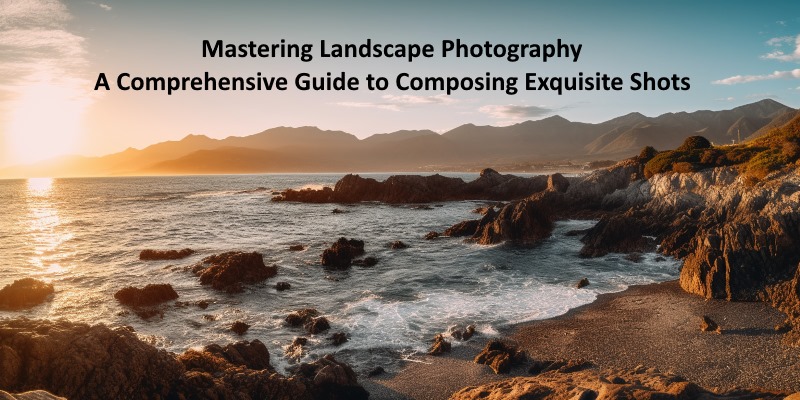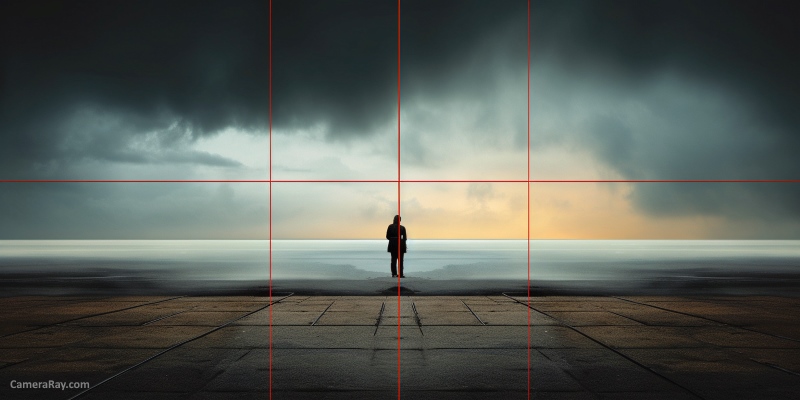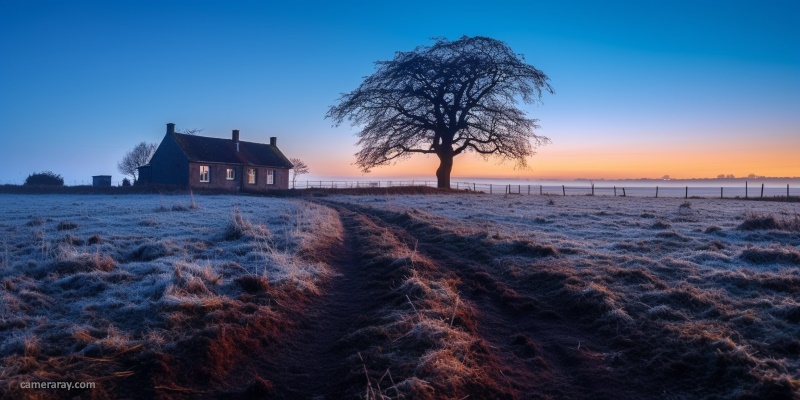
Mastering Landscape Photography: A Comprehensive Guide to Composing Exquisite Shots.
Landscape photography can be an artist’s ultimate expression of the beauty of the world. It allows one to capture not only the grandeur of nature but also the delicate nuances that provide depth and meaning to a place. This guide aims to introduce key aspects of landscape composition to beginner and intermediate photographers, helping you create images that captivate and inspire.
Understanding Composition
The composition of a photograph is the arrangement of visual elements within the frame. It’s the blueprint of your photograph that gives it structure and guides the viewer’s eye through the image. In landscape photography, the goal is often to present the scene in a way that effectively communicates its scale and grandeur, and elicits emotional responses.

The Rule of Thirds
One of the most common and easiest rules to apply in composition is the ‘Rule of Thirds’. Imagine dividing your frame with two equally spaced horizontal lines and two equally spaced vertical lines. The points where these lines intersect are considered aesthetically pleasing spots to place your subject. When applied to landscape photography, the rule of thirds can help balance your photograph by allowing you to separate the sky, the horizon, and the foreground into distinct sections.
Leading Lines
Leading lines are another powerful compositional tool in landscape photography. They guide the viewer’s eye into and around the image, creating a visual journey from the foreground to the background. They can be natural, like rivers, roads, or mountain ridges, or man-made, like fences or pathways. The important thing is they should lead toward the primary subject or focal point of your image, encouraging the viewer to engage with the whole scene.
Foreground Interest and Depth
A compelling foreground can add depth and a sense of three-dimensionality to your landscape photographs. By including elements such as rocks, flowers, or trees in your foreground, you create layers that invite the viewer to explore the image from front to back. This also helps to convey the scale and distances within the scene. When shooting wide landscapes, try using a wide-angle lens and getting close to your foreground subject. This will exaggerate its size relative to the background, enhancing the sense of depth.
Balance and Symmetry
While not every landscape photograph needs perfect symmetry, a balanced composition is typically more pleasing to the eye. Balance does not necessarily mean mirroring elements on either side of your frame. It could also be a balance of colors, textures, or light and dark areas. A balanced photograph feels stable and harmonious, whereas an unbalanced one can leave the viewer feeling uneasy.

Natural Light and Time of Day
No discussion about landscape composition can ignore the role of natural light. The quality of light can dramatically change the mood of a landscape. Generally, the most appealing light for landscapes is found during the ‘Golden Hour’ – the hour after sunrise and the hour before sunset. During these times, the light is soft, warm, and casts long shadows, adding depth and dimension to the landscape. The ‘Blue Hour’, the period just before sunrise and after sunset, can also offer beautifully diffused light and rich blue tones.
The Role of Weather
Weather plays a significant role in the mood and atmosphere of a landscape photo. A clear blue sky can convey a sense of peace and tranquility, while stormy clouds can create dramatic tension. Fog can add a mysterious or eerie feel. Don’t shy away from shooting in less-than-ideal conditions; they often result in the most unique and compelling images.
Patience and Practice
Lastly, patience is crucial in landscape photography. Sometimes, it’s about waiting for the perfect light, the clearing of a cloud, or the right wave. It’s also about revisiting the same locations in different seasons or different times of the day. And, most importantly, it’s about persistently refining your composition skills and learning from each shoot.
Experimentation and Creativity
While the rules of composition provide excellent starting points, they are not set in stone. Photography is an art, and like any art form, it should allow room for experimentation and creativity. Once you’re comfortable with the basic rules, try breaking them deliberately. You might just discover a new style that sets your work apart. Try different perspectives, such as a low-angle shot that foregrounds the texture of a beach or a high-angle shot that reveals the patterns of a mountain range.
You can find the latest landscape books and gear here at a fair price.
Consideration of Color and Texture
Color and texture can also contribute to your landscape compositions. Bright, saturated colors often draw the eye and can become a focal point in your image. Similarly, unique or contrasting textures can add interest and detail to a landscape photograph. For example, the rough texture of a rocky cliff can provide a striking contrast to a smooth, tranquil sea.
The Importance of Post-Processing
Lastly, don’t underestimate the role of post-processing in perfecting your landscape compositions. Editing tools like Adobe Lightroom or Photoshop allow you to fine-tune your images, enhancing the colors, contrast, and details that make your landscape unique. However, remember that the goal of post-processing should be to enhance the natural beauty of the scene, not to create an unrealistic representation.
Landscape photography is an incredibly rewarding pursuit that combines a love of nature with artistic expression. Mastering the art of composition is a vital step on this journey. While technical knowledge and gear can help, the real key lies in your ability to see and interpret the world around you. So, venture out, explore, and let the beauty of the landscape inspire you. Remember that each photograph you capture is not merely an image, but a representation of your unique interaction with our planet’s endless beauty.
Remember, composition is more than a set of rules—it’s a way of seeing and understanding the world. By investing time and effort in learning this skill, you can enhance your photographic style, creating landscape images that truly resonate and inspire.
You can find the latest landscape books and gear here at a fair price.